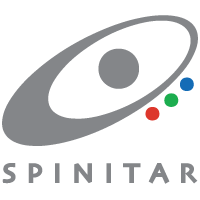
Beaverton, OR 97008
United States
Biamp
Model: Devio DTM-1

Oct. 12, 2023 - Libraries are sanctuaries of knowledge and learning. But they can also be noisy, with the rustling of papers, clicking of keyboards, and murmuring of conversations. Such background noise can be distracting for those trying to read, study, or work. The same goes for open learning spaces on school and university campuses. That’s why more of these institutions are turning to sound masking as a solution to create quiet spaces.
Sound masking helps provide quiet environments needed for concentration by emitting a uniform background sound that covers up unwanted noises. The gentle hum emitted by the system is designed to be largely unnoticeable, yet it raises the ambient sound level just enough to mask distracting speech and other noises, delivering many benefits in libraries and learning centers.
Promoting focus
By covering up conversations, shuffling footsteps, and other variable noise distractions, sound masking creates a steady backdrop that is easier to tune out. Students can better focus on the task at hand without unpredictable noise disturbances.
Defining quiet zones
With the zoning capability as part of the Cambridge Qt X sound masking platform from Biamp, libraries can designate permanently quiet areas such as reading rooms, study nooks, and computer labs. Students know where to go when they need a quiet space for distraction-free learning.
Respecting all learning styles
Learners have different noise preferences when it comes to studying. Sound masking accommodates those who want absolute silence as well as those who prefer a subtle background noise. A 2015 survey on college students’ study preferences was conducted by researchers at the University of Chicago. It polled a sample of 361 undergraduate students at the university about their preferred noise levels and environments when studying for exams.
The study found:
34% of students said they preferred complete silence when studying
39% favored having a subtle background sound
15% liked studying with normal conversational sounds
Of the students who preferred background sounds:
52% said instrumental music or ambient sounds helped them concentrate
61% used background sound to drown out more distracting noises
37% reported background sound blocked out distracting conversations
29% said a subtle noise provided a calming study environment
The researchers concluded that students have a wide range of ambient sound preferences, but most benefit from spaces that provided some acoustic separation from others through sound absorption and masking. One of the key benefits of sound masking is that it allows those who want quiet to find it, while not prohibiting collaborative study.
Keeping noise contained
Noise travels easily in open, reverberant spaces. Sound masking reduces both the range that noise can be heard and speech intelligibility, which keeps the sounds of nearby conversations from carrying between sections.
To make the most of sound masking’s capabilities, libraries and other quiet learning spaces should consider allowing staff to adjust output settings depending on the time of day, occupancy, and how each space is typically used.
Quiet spaces nurture productivity, creativity, and academic excellence. To help optimize such spaces, Biamp offers complete sound masking solutions that are engineered for libraries, learning centers, and research facilities.

